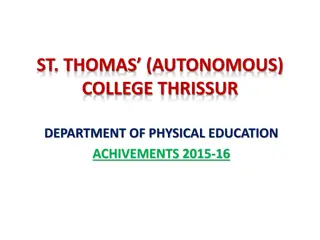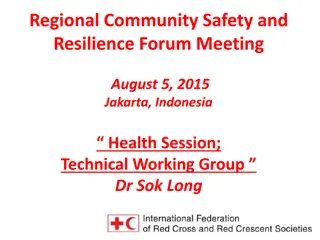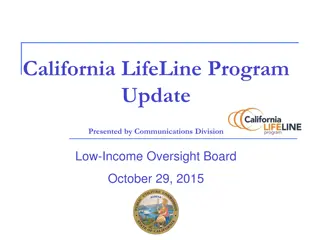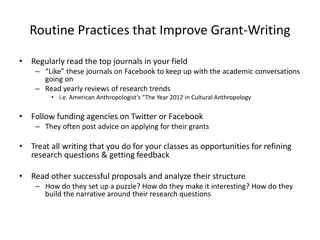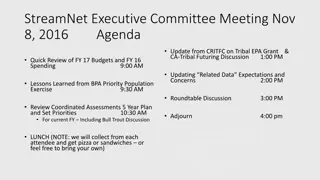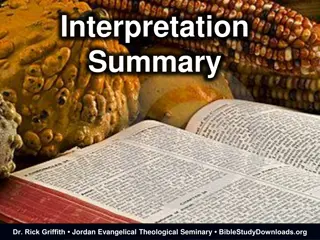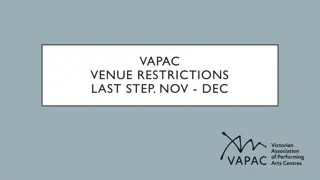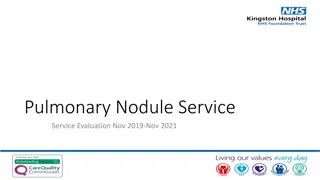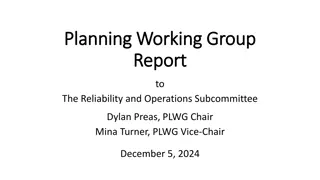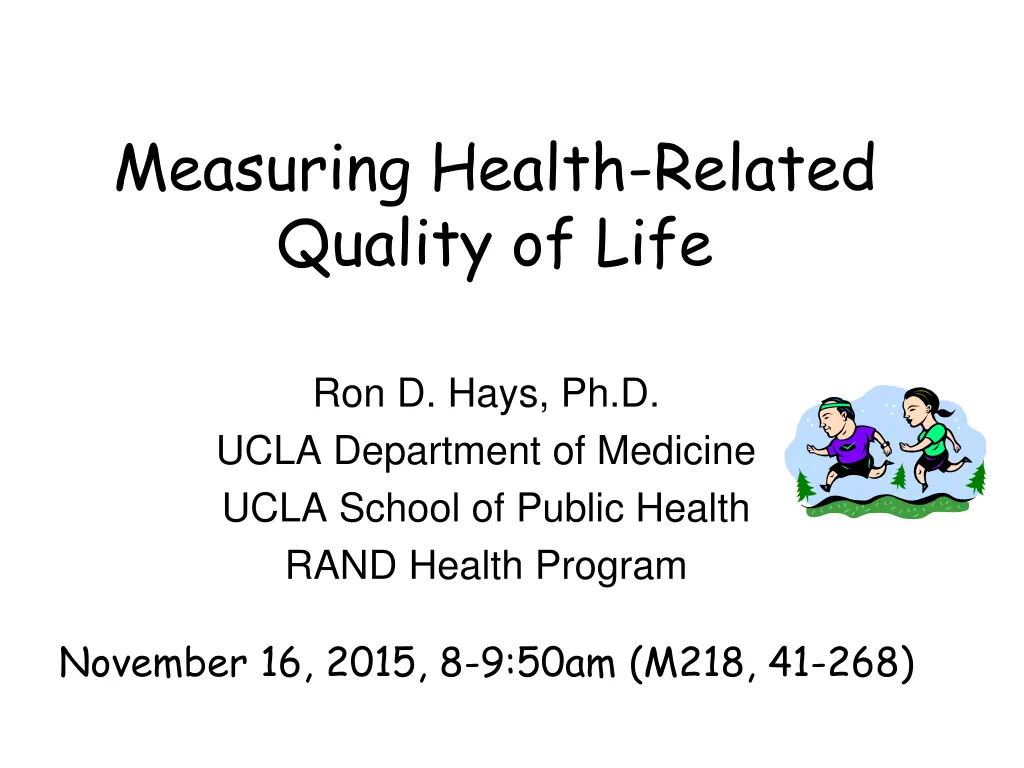
Effective Measures and Indicators of Health-Related Quality of Life
Discover how to measure and improve health-related quality of life, including indicators like signs, symptoms, well-being, and functioning. Learn about the importance of patient-reported measures and determinants of health for enhancing care quality and outcomes.
Download Presentation

Please find below an Image/Link to download the presentation.
The content on the website is provided AS IS for your information and personal use only. It may not be sold, licensed, or shared on other websites without obtaining consent from the author. If you encounter any issues during the download, it is possible that the publisher has removed the file from their server.
You are allowed to download the files provided on this website for personal or commercial use, subject to the condition that they are used lawfully. All files are the property of their respective owners.
The content on the website is provided AS IS for your information and personal use only. It may not be sold, licensed, or shared on other websites without obtaining consent from the author.
E N D
Presentation Transcript
Measuring Health-Related Quality of Life Ron D. Hays, Ph.D. UCLA Department of Medicine UCLA School of Public Health RAND Health Program November 16, 2015, 8-9:50am (M218, 41-268)
U.S. Health Care Issues ACE Signs Access to care ~ 50 million people without health insurance Costs of care Expenditures ~ $ 2.7 Trillion Effectiveness (quality) of care 2
How Do We Know If Care Is Effective? Effective care maximizes probability of desired health outcomes Health outcome measures indicate whether care is effective Cost Effectiveness 3
Indicators of Health Signs and Symptoms of Disease 4
Indicators of Health Signs and Symptoms of Disease Functioning Well-Being 5
Health-Related Quality of Life (HRQOL) How the person FEELs (well-being) Emotional well-being Pain Energy What the person can DO (functioning) Self-care Role Social 6
Indicators of Health Signs and Symptoms of Disease Functioning Well-Being 7
KDQOL Symptoms/Problems During the past 4 weeks, to what extent were you bothered by each of the following? Soreness in your muscles? Chest pain? Itchy skin? Shortness of breath? Faintness or dizziness? 8
Health-Related Quality of Life (HRQOL) Quality of environment Type of housing Level of income Social Support 9
Determinants of Health Quality Of Care Health Characteristics Behavior Environment Chronic Conditions 10
Patient-Reported Measures (PRMs) Mediators Health behaviors (adherence) Health Care Process Reports about care (e.g., communication) Outcomes (PROs) Patient satisfaction with care Health-Related Quality of Life (HRQOL) 11
Types of HRQOL Measures Single item In general, how would you rate your health? Multiple Scores (Profile) Generic (SF-36) How much of the time during the past 4 weeks have you been happy? (None of the time All of the time) Targeted ( Disease specific ) KDQOL-36 My kidney disease interferes too much with my life. Single Score Preference-based (EQ-5D, HUI, SF-6D) 12
HRQOL Scoring Options 0-100 possible range T-scores (mean = 50, SD = 10) (10 * z-score) + 50 z-score = (score mean)/SD 0 (dead) to 1 (perfect health) 13
In general, how would you rate your health? Hays, Spritzer, Thompson, & Cella (2015, JGIM) 62 = Excellent 54 = Very Good 47 = Good 38 = Fair 29 = Poor Reliability = 0.52 (compared to 0.81 for 4-item scale). 14
HRQOL in HIV Compared to other Chronic Illnesses and General Population Emot. Phy func MS ESRD Diabetes Depression Prostate disease GERD Epilepsy General Pop AIDS Symptomatic Asymptomatic 0 10 20 30 40 50 60 T-score metric 15 Hays et al. (2000), American Journal of Medicine
HRQOL in HIV Compared to other Chronic Illnesses and General Population Emot. Phy func MS ESRD Diabetes Depression Prostate disease GERD Epilepsy General Pop AIDS Symptomatic Asymptomatic 0 10 20 30 40 50 60 T-score metric 16 Hays et al. (2000), American Journal of Medicine
HRQOL in HIV Compared to other Chronic Illnesses and General Population Emot. Phy func MS ESRD Diabetes Depression Prostate disease GERD Epilepsy General Pop AIDS Symptomatic Asymptomatic 0 10 20 30 40 50 60 T-score metric 17 Hays et al. (2000), American Journal of Medicine
HRQOL in HIV Compared to other Chronic Illnesses and General Population Emot. Phy func MS ESRD Diabetes Depression Prostate disease GERD Epilepsy General Pop AIDS Symptomatic Asymptomatic 0 10 20 30 40 50 60 T-score metric 18 Hays et al. (2000), American Journal of Medicine
Item Responses and Trait Levels Person 1 Person 2 Person 3 Trait Continuum Item 1 Item 2 Item 3 www.nihpromis.org 19
20 30 40 60 70 80
Reliability Target for Use of Measures with Individuals Reliability ranges from 0-1 0.90 or above is goal SE = SD (1- reliability)1/2 Reliability = 1 (SE/10)2 Reliability = 0.90 when SE = 3.2 95% CI = true score +/- 1.96 x SE 21
In the past 7 days I was grouchy [1st question] Never [39] Rarely [48] Sometimes [56] Often [64] Always [72] Estimated Anger = 56.1 SE = 5.7 (rel. = 0.68) 22
In the past 7 days I felt like I was ready to explode [2nd question] Never Rarely Sometimes Often Always Estimated Anger = 51.9 SE = 4.8 (rel. = 0.77) 23
In the past 7 days I felt angry [3rd question] Never Rarely Sometimes Often Always Estimated Anger = 50.5 SE = 3.9 (rel. = 0.85) 24
In the past 7 days I felt angrier than I thought I should [4th question] - Never Rarely Sometimes Often Always Estimated Anger = 48.8 SE = 3.6 (rel. = 0.87) 25
In the past 7 days I felt annoyed [5th question] Never Rarely Sometimes Often Always Estimated Anger = 50.1 SE = 3.2 (rel. = 0.90) 26
In the past 7 days I made myself angry about something just by thinking about it. [6th question] Never Rarely Sometimes Often Always Estimated Anger = 50.2 SE = 2.8 (rel = 0.92) (95% CI: 44.7-55.7) 27
PROMIS Physical Functioning vs. Legacy Measures 10 20 30 40 50 60 70 28
In general, how would you rate your health? Excellent Very Good Good Fair Poor 29
Is CAM Better than Standard Care (SC)? 100 90 80 CAM 70 SC 60 CAM 50 SC 40 30 20 10 0 Physical Health Mental Health CAM > SC SC > CAM 31
Is Acupuncture Related to Worse HRQOL? Subject Acupuncture General Health 1 2 3 4 5 6 7 8 9 No No No No No Yes Yes Yes Yes Yes dead dead 50 60 70 40 50 50 55 55 10 Group n HRQOL No Acupuncture Yes Acupuncture 3 5 60 50 32
0.435 34
HRQOL in SEER-Medicare Health Outcomes Study (n=126,366) Controlling for age, gender, race/ethnicity, education, income, and marital status. 35
Physical Functioning and Emotional Well-Being at Baseline for 54 Patients at UCLA-Center for East West Medicine EWB Physical MS = multiple sclerois; ESRD = end-stage renal disease; GERD = gastroesophageal reflux disease. 36 36
Significant Improvement in all but 1 of SF-36 Scales (Change is in T-score metric) Change t-test prob. PF-10 RP-4 BP-2 GH-5 EN-4 SF-2 RE-3 EWB-5 PCS MCS 1.7 4.1 3.6 2.4 5.1 4.7 1.5 4.3 2.8 3.9 2.38 3.81 2.59 2.86 4.33 3.51 0.96 3.20 3.23 2.82 .0208 .0004 .0125 .0061 .0001 .0009 .3400 .0023 .0021 .0067 37
Effect Size (Follow-up Baseline)/ SDbaseline Cohen s Rule of Thumb: ES = 0.20 Small ES = 0.50 Medium ES = 0.80 Large 38
Effect Sizes for Changes in SF-36 Scores Effect Size 50 0.53 0.36 0.13 0.35 0.35 0.21 0.11 0.41 0.24 0.30 45 40 35 30 25 Baseline 20 Followup 15 10 5 0 PFI Role-P Pain Gen H Energy Social Role-E EWB PCS MCS PFI = Physical Functioning; Role-P = Role-Physical; Pain = Bodily Pain; Gen H=General Health; Energy = Energy/Fatigue; Social = Social Functioning; Role-E = Role-Emotional; EWB = Emotional Well-being; PCS = Physical Component Summary; MCS =Mental Component Summary. 39
Defining a Responder: Reliable Change Index (RCI) X X 2 1 ( 2 ( ) ) SEM = 1 SEM SD r bl xx Note: SDbl= standard deviation at baseline rxx = reliability 40
Amount of Change in Observed Score Needed To be Statistically Significant ( 2 (SD ) ) r - (1 (1.96) ) xx bl Note: SDbl= standard deviation at baseline and rxx = reliability 41
Amount of Change in Observed Score Needed for Significant Individual Change Scale RCI Effect size Cronbach s alpha PF-10 8.4 0.67 0.94 RP-4 8.4 0.72 0.93 BP-2 10.4 1.01 0.87 GH-5 13.0 1.13 0.83 EN-4 12.8 1.33 0.77 SF-2 13.8 1.07 0.85 RE-3 9.7 0.71 0.94 EWB-5 13.4 1.26 0.79 PCS 7.1 0.62 0.94* MCS 9.7 0.73 0.93* * Mosier s formula (not coefficient alpha). 42 42
Amount of Change Needed for Significant Individual Change Effect Size 1.33 1.07 0.67 0.72 1.01 1.13 0.71 1.26 0.62 0.73 PFI = Physical Functioning; Role-P = Role-Physical; Pain = Bodily Pain; Gen H=General Health; Energy = Energy/Fatigue; Social = Social Functioning; Role-E = Role-Emotional; EWB = Emotional Well-being; PCS = Physical Component Summary; MCS =Mental Component Summary. 43
7-31% of People in Sample Improve Significantly % Improving % Declining Difference PF-10 RP-4 13% 31% 2% 2% + 11% + 29% BP-2 22% 7% + 15% GH-5 EN-4 SF-2 RE-3 EWB-5 PCS 7% 9% 17% 15% 19% 24% 0% 2% 4% 15% 4% 7% + 7% + 7% + 13% 0% + 15% + 17% MCS 22% 11% + 11% 44
HRQOL vs SWB HRQOL SWB International Society of Quality of Life Research (ISOQOL) Founded 1994 Quality of Life Research Springer International Society of Quality of Life Studies (ISQOLS) Founded around 1994 Applied Research in Quality of Life Springer
Experienced Well-Being Emotional states or mood over short periods of time. Did you experience anger during a lot of the day yesterday? Yes No 46
Eudemonic Well-Being Perceived purpose and fulfillment Overall, to what extent do you feel that the things you do in your life are worthwhile? Not at all (0) 10 (Completely) 47
Evaluative Well-Being Overall appraisal of one s life How satisfied are you with your life in general? Very satisfied Somewhat satisfied Somewhat dissatisfied Very dissatisfied 48
Thank you. drhays@g.ucla.edu Powerpoint file at: http://gim.med.ucla.edu/FacultyPages/Hays/ 49






